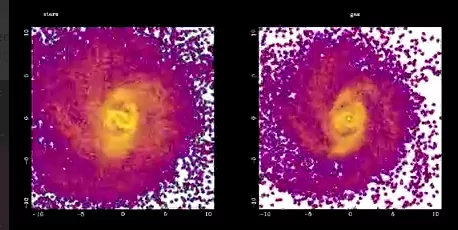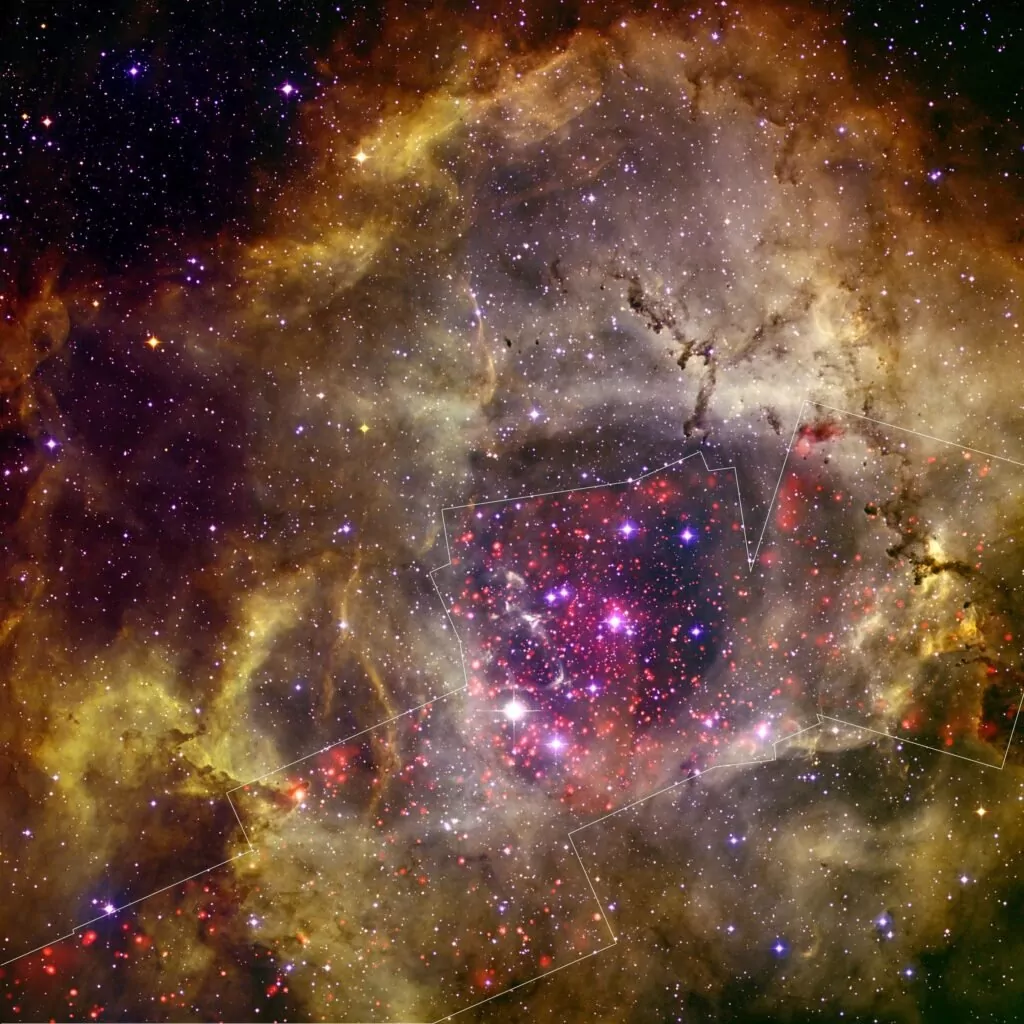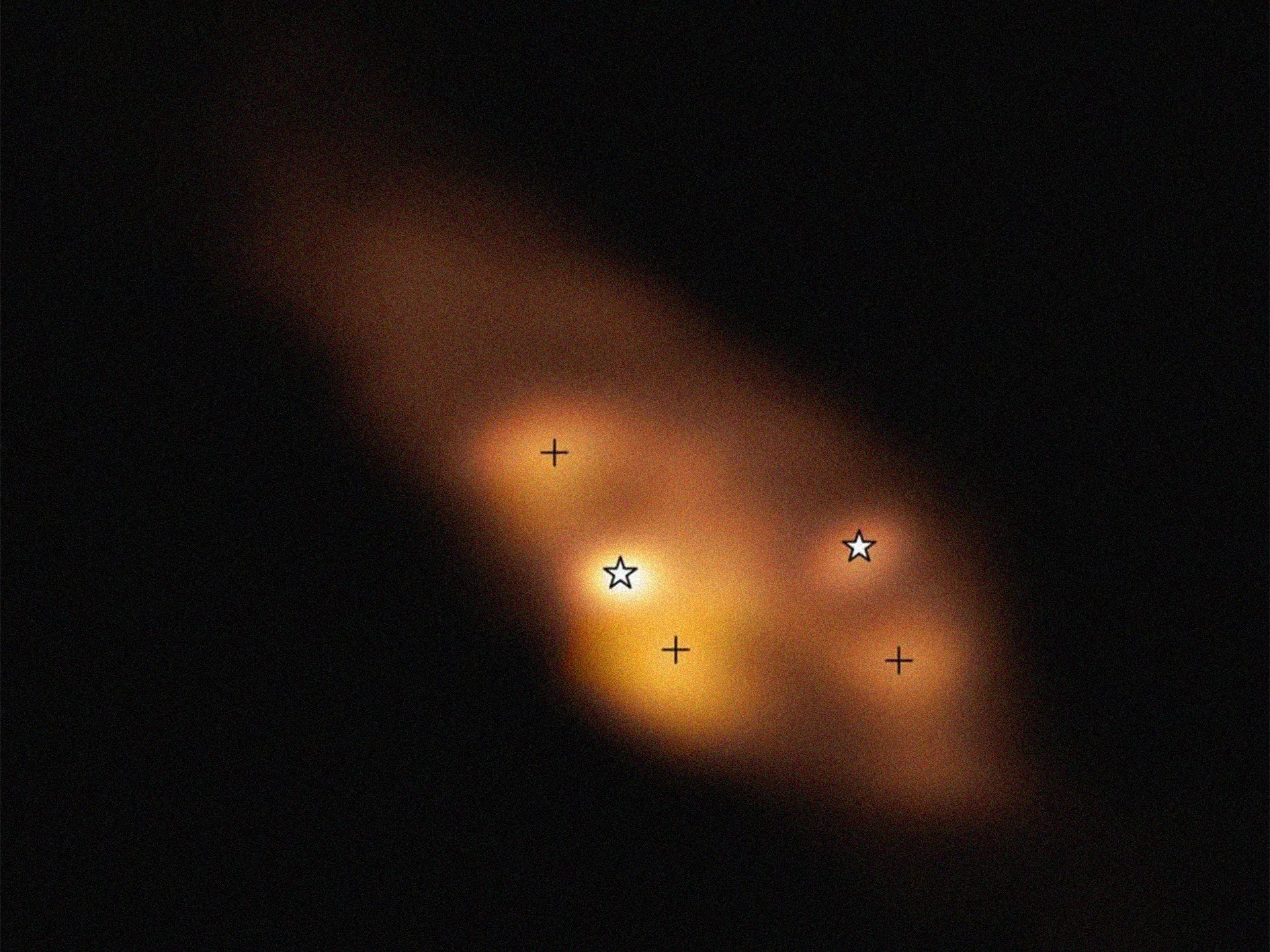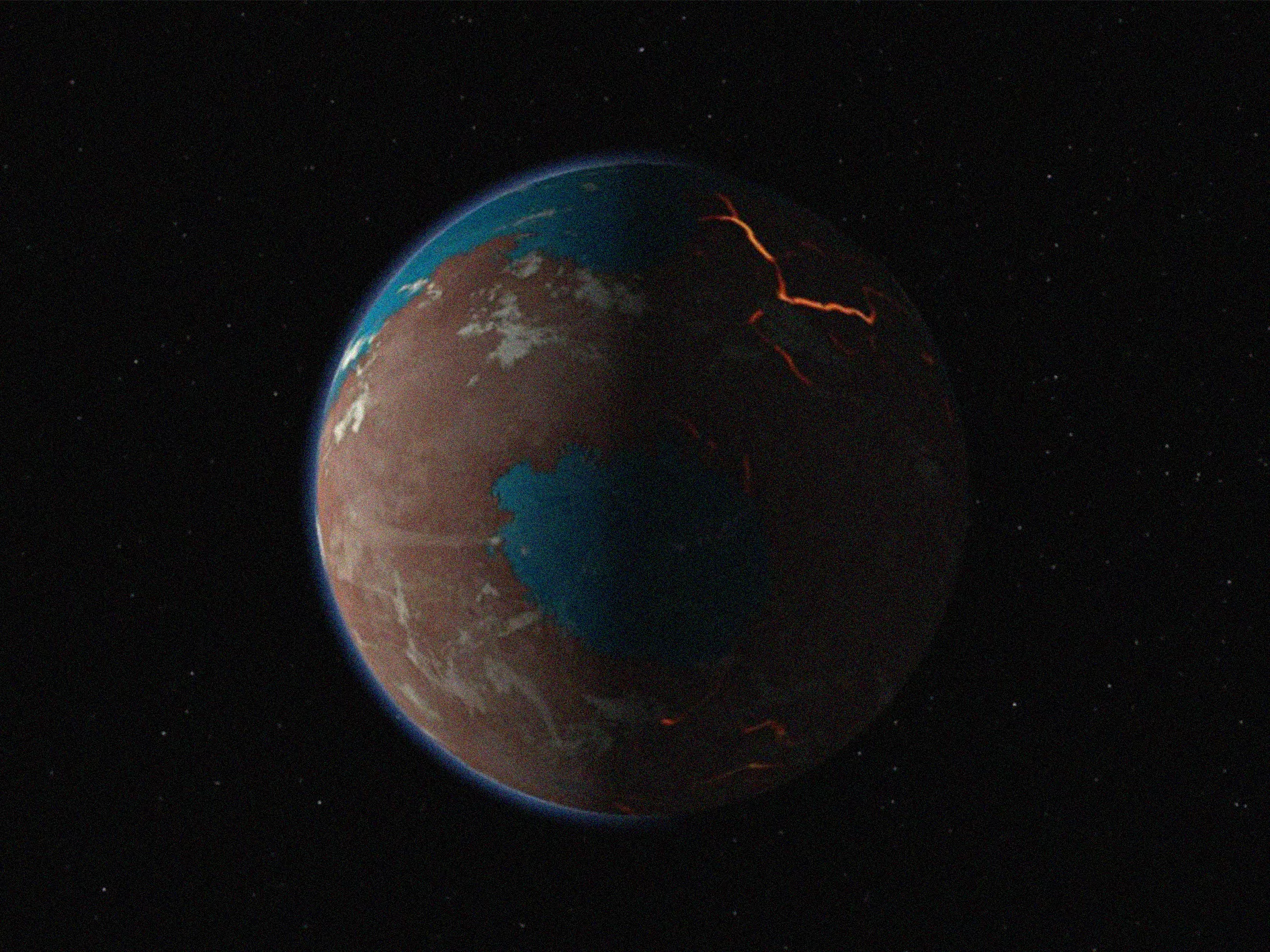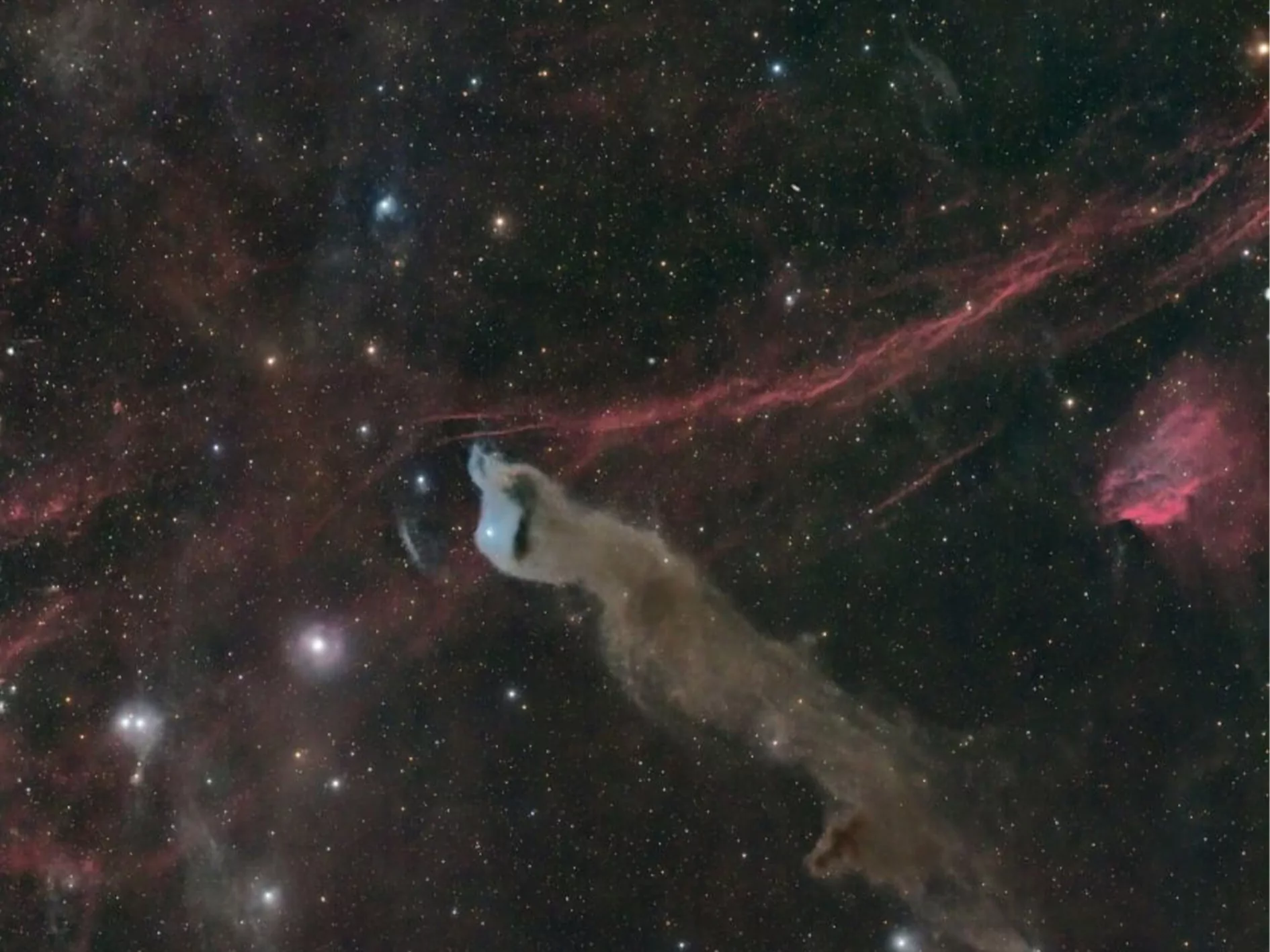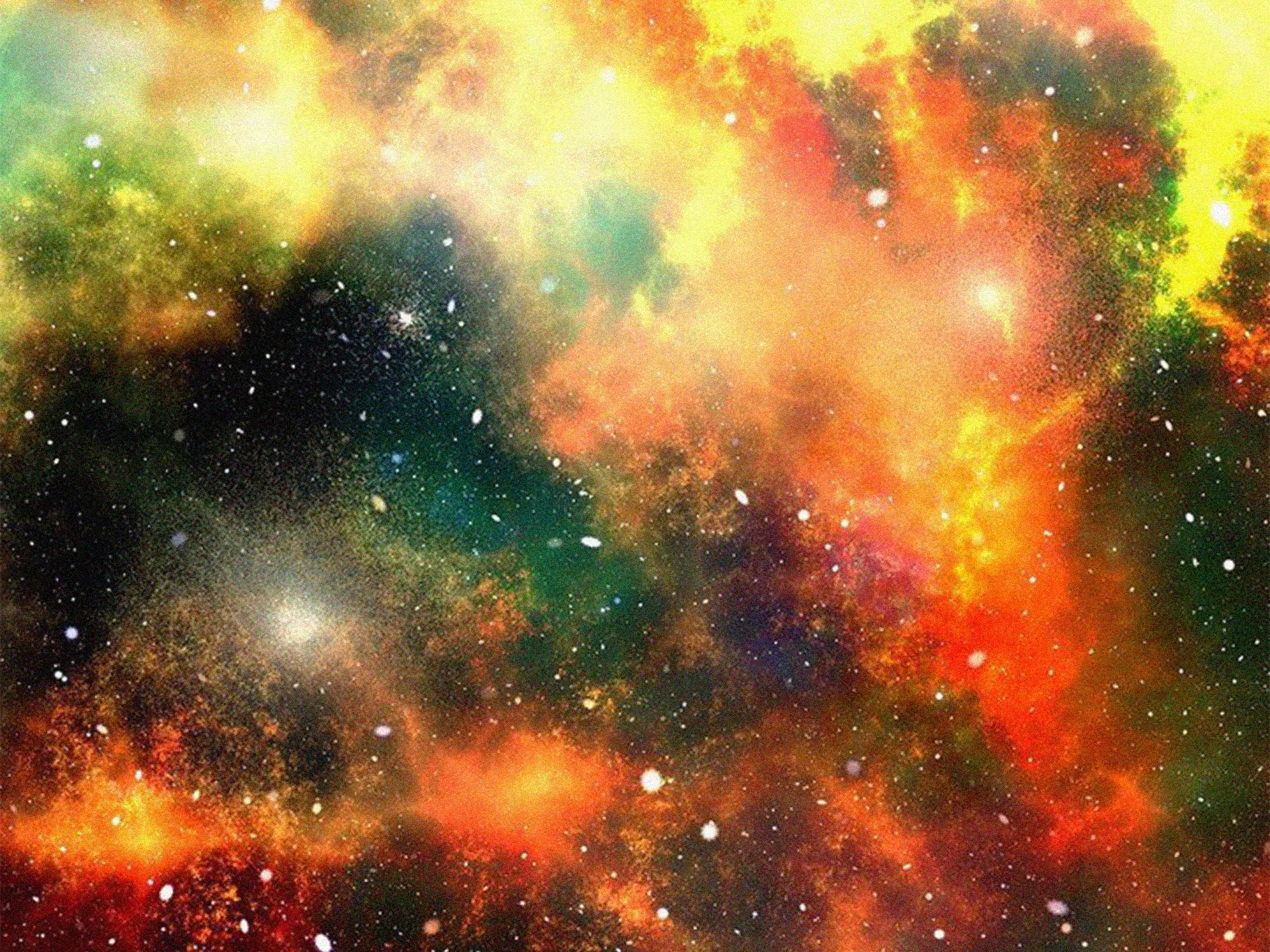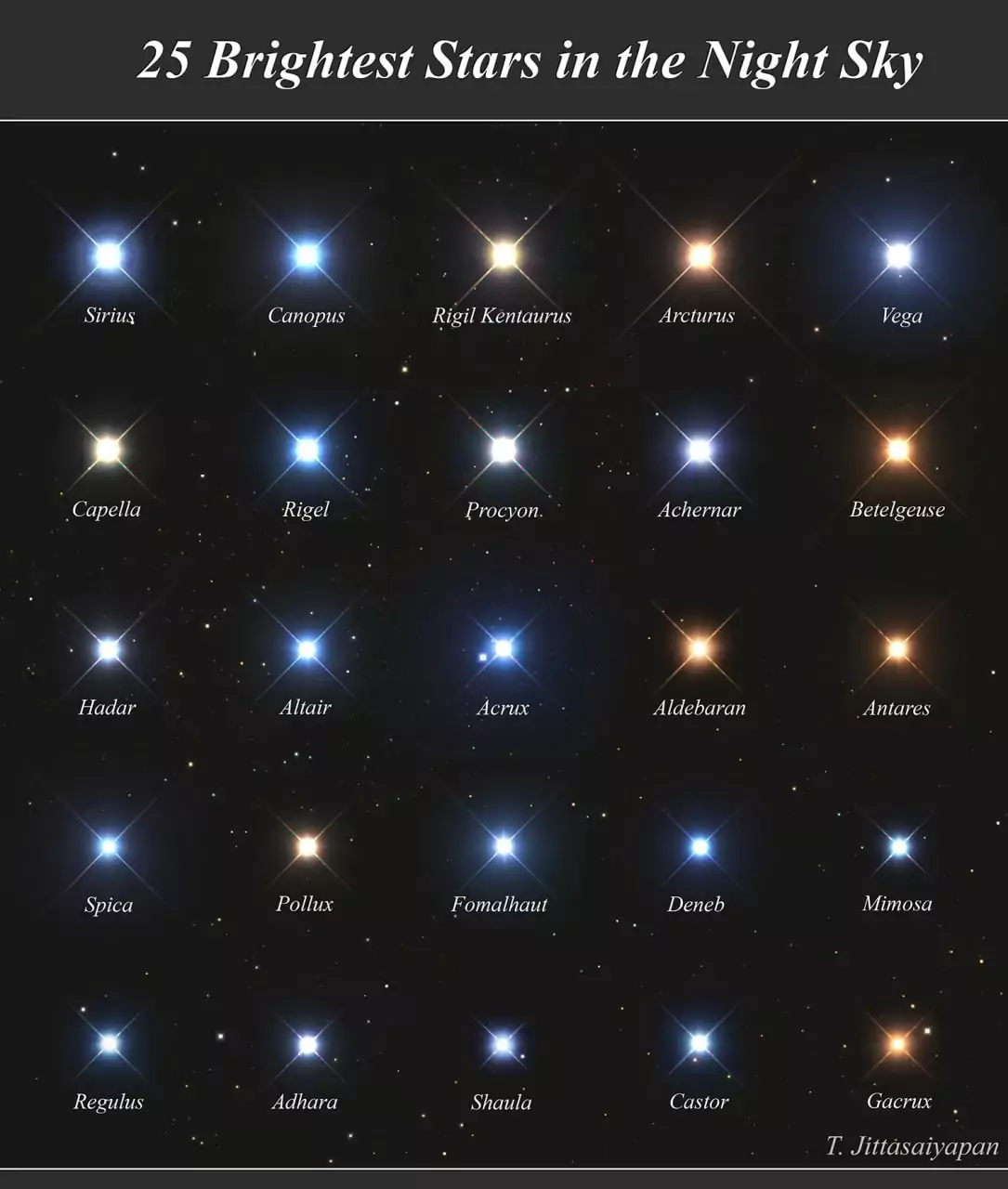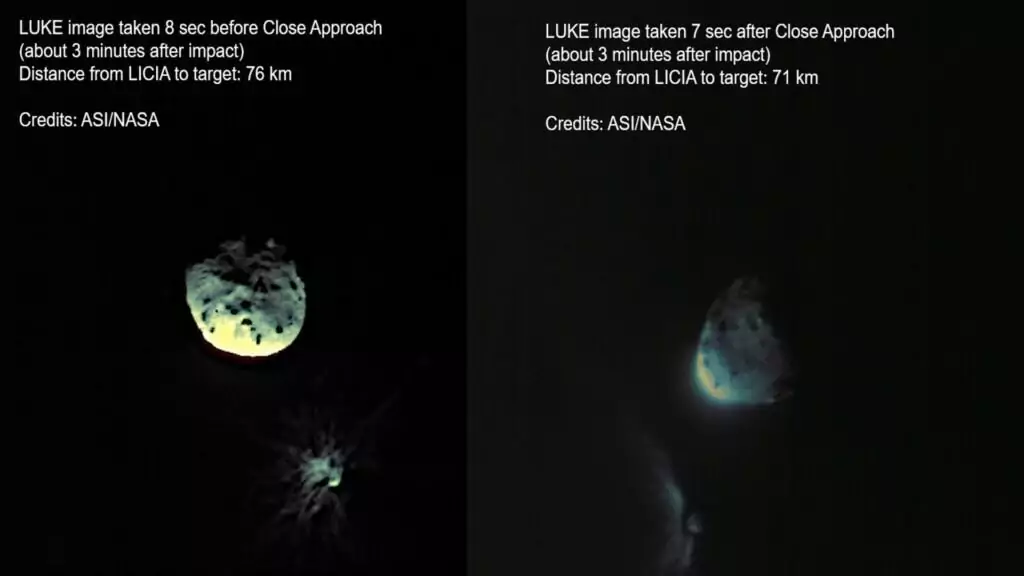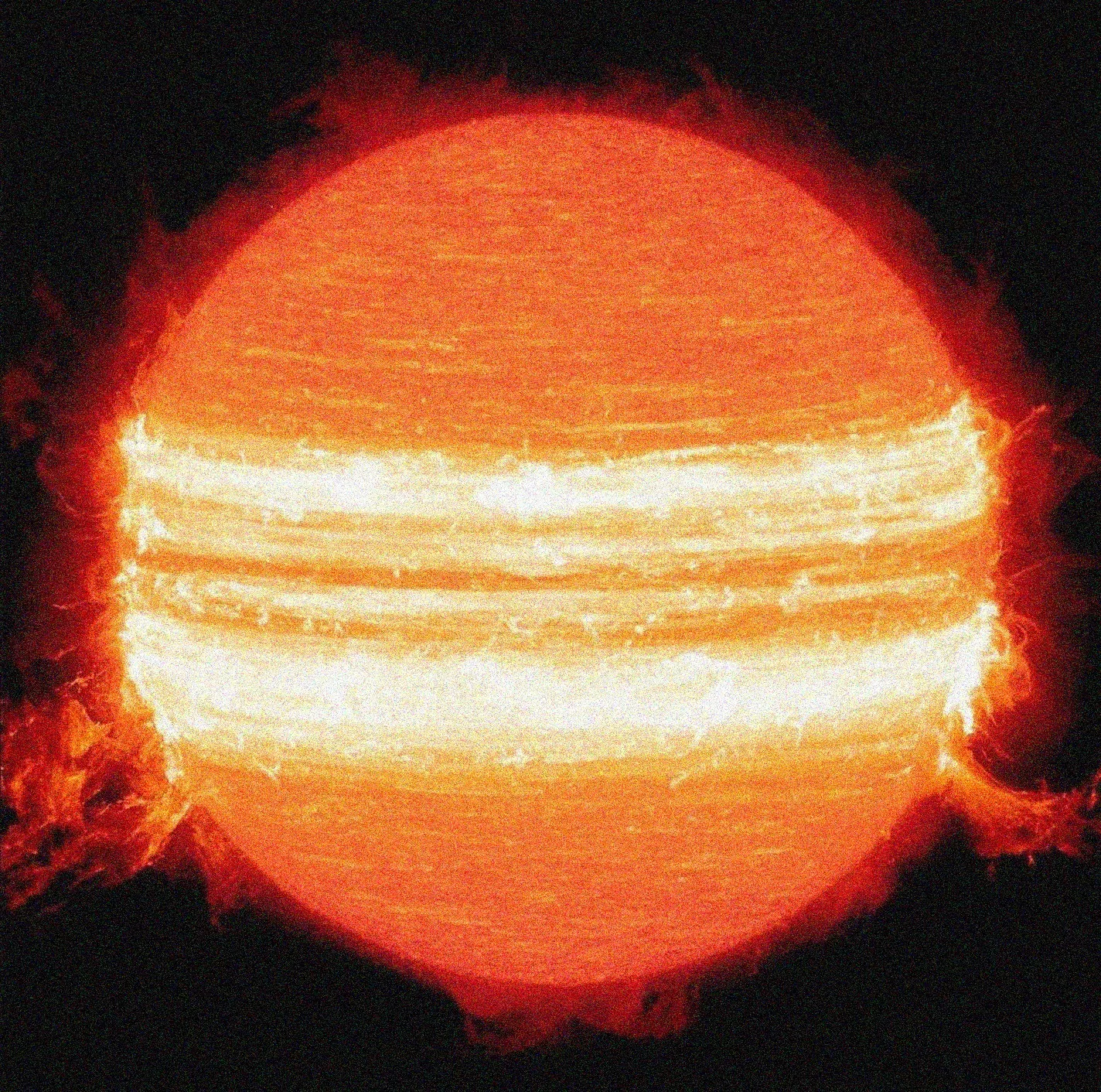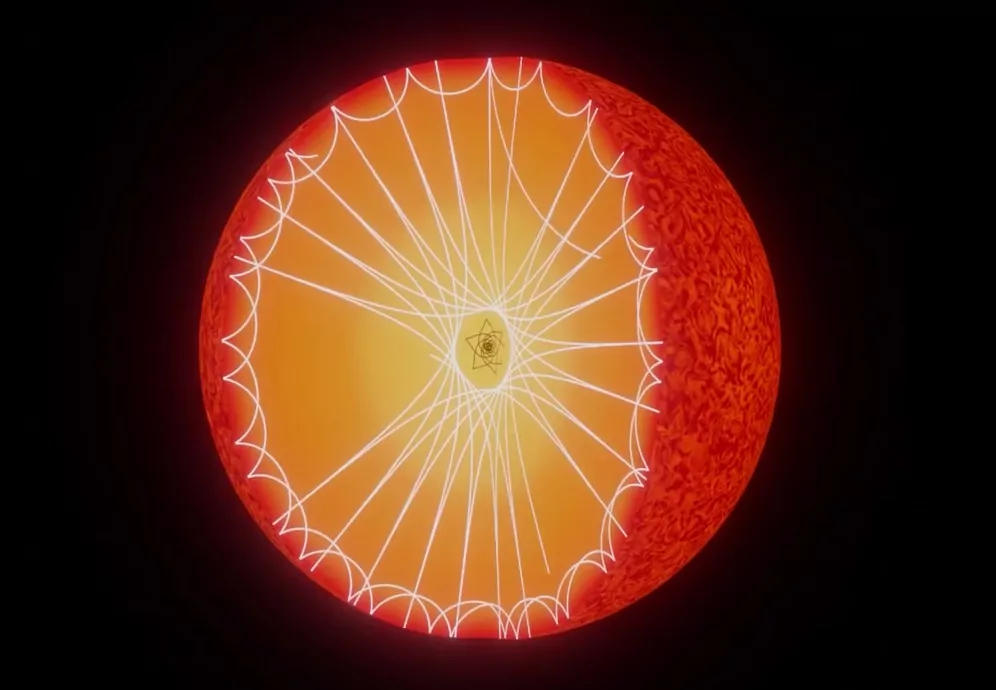-
«James Webb» discovered spiral galaxies with jumpers formed in the early Universe

A new study based on observations of the James Webb Space Telescope suggests a new look at the evolution of galaxies. As part of an early program to study distant galaxies, the observatory discovered well-structured spiral galaxies at a time when they should not have formed yet, if existing models are followed. Jumpers were observed…
-
Giant nebula «Rosette»

Here is a composite image of the Rosette nebula, located about 5,000 light-years from Earth. This region of ionized hydrogen is famous for rapid star formation. To create the image, we used:— X—ray data (red) from NASA’s Chandra Space Observatory; X-ray data allows us to see hundreds of young stars grouped in the center of…
-
Astronomers have discovered areas with unusual properties around young stars

Their formation may be associated with shock waves. The ALMA snapshot shows similar regions. They are located in a dust disk surrounding two very young stars. The colors indicate the temperature distribution: brighter shades correspond to a higher temperature. Shock waves may help enrich the gas at the early stages of the formation of the…
-
Early Mars could have been a blue planet covered in water

According to a new study, Mars’ early atmosphere was denser and richer in hydrogen than its current rarefied gas envelope saturated with carbon dioxide. The models showed that the main gases coming out of the early magma ocean were a mixture of molecular hydrogen and water vapor. Hydrogen is the lightest element in the universe,…
-
The Wolf Cave Dust Complex

Reflective nebula VdB 152 at the tip of the dark nebula Barnard 175 in the frame of Francis Moreau These cosmic ghosts are located at a distance of 1400 light-years from us in the constellation Cepheus.
-
Cosmic dust

It sounds magical, but most likely you inhale it every day on the way to work, during a trip to the store or corny, opening a window. Continuously, dust from meteorites, comets and other small bodies of the Solar System falls to Earth in the form of tiny particles that increase the level of sodium…
-
Do you know the names of some of the brightest stars?

Many world cultures have their own names of the brightest stars, and it is important for the history of culture to remember them. However, in order to avoid ambiguity in the exchange of information on a worldwide scale, the International Astronomical Union assigns standardized names to stars. The picture shows in true colors the 25…
-
Asteroid Dimorph «lost weight» by a thousand tons as a result of the DART impact

The Dimorph ram took place on September 26, 2022. A few minutes after the impact, the Italian cubesat LICIACube made a close flyby of the asteroid. The pictures he took showed that the impact knocked out a large amount of matter from the surface of the Dimorph. According to experts, during the subsequent analysis of…
-
Incredible image of the Sun’s activity

In 2014, photographer and amateur astronomer Matt Malloy created an incredible image of the Sun’s activity by combining a huge number of photos transmitted to Earth by NASA’s SDO Solar Dynamics Space Observatory. To create the image, Molloy used images taken between September 1 and October 8 of the same year. The author of the…
-
Astronomers have discovered anomalies in the cores of red giants

Red giants are dying stars in advanced stages of stellar evolution that have depleted the hydrogen reserves in their cores. Astronomers have discovered new evidence that red giants experience «disruptions»—abrupt structural changes—in their inner core. Unfortunately, it is impossible to look directly inside the star. However, a method called asteroseismology, which measures fluctuations similar to…
